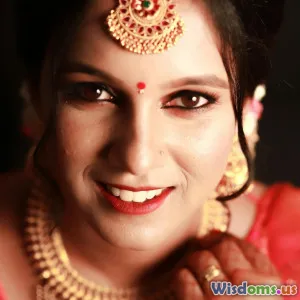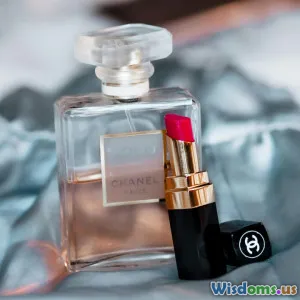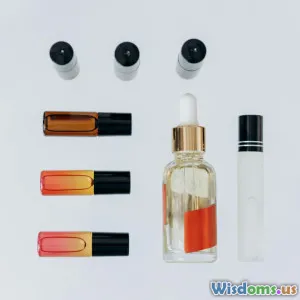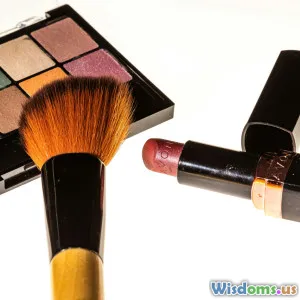
Why Do Classic Red Lips Never Go Out of Style
9 min read Explore why classic red lips remain a timeless beauty staple, reflecting history, empowerment, and cultural allure across decades. (0 Reviews)
Why Do Classic Red Lips Never Go Out of Style?
Introduction
Few beauty statements are as bold and evocative as classic red lips. From glamorous Hollywood icons to everyday style enthusiasts, red lipstick has a magnetic allure that transcends generations and cultures. But why exactly do classic red lips never go out of style? What is it about that vivid shade that continually captures imaginations and reignites trends? This article embarks on a fascinating journey through history, psychology, and cultural shifts to uncover the reasons behind red lips’ everlasting presence on beauty palettes worldwide.
The Historical Roots of Red Lips
Ancient Symbolism and Early Use
The story of red lips begins thousands of years ago. Ancient civilizations, including the Egyptians and Mesopotamians, cherished red pigments made from natural sources like crushed insects (cochineal) and plants such as red ochre. Queen Cleopatra famously used red pigments not only for cosmetic allure but also to signify status and express power. The ancient Greeks and Romans further embraced Rouge as a marker of beauty and wealth, often constricted to the elite.
The Evolution Through the Centuries
Red lips took on new meanings during more recent historical periods. In the Victorian era, however, lipstick was controversial, associated mainly with actresses and women of dubious repute. Yet, by the 1920s, red lips emerged as a symbol of rebellion and female empowerment. The iconic flapper generation adopted bold red lipstick as an emblem of independence and liberation during a transformative era for women’s rights.
Hollywood’s Golden Age bolstered the glamorization of red lipstick. Stars like Marilyn Monroe, Rita Hayworth, and Elizabeth Taylor made red lips synonymous with glamour and sensuality. This era firmly cemented red lipstick as an essential part of sultry femininity and star allure.
Psychological and Cultural Impact
Red as the Color of Confidence and Power
Beyond history, the psychological impact of red lips plays an integral role in its timelessness. Red is universally recognized as a color symbolizing passion, power, and energy. Studies in color psychology demonstrate that red lips can increase perceptions of attractiveness and confidence. For example, a 2013 study published in Evolution and Human Behavior found that women wearing red lipstick were rated as more attractive and having higher status in social contexts.
Besides attraction, red lipstick enhances an individual's presence and confidence. According to makeup artists and psychologists alike, putting on red lipstick often translates into an instant mood booster, commanding attention and fostering a sense of empowerment.
The Cultural Language of Red Lips
The cultural significance of red lips is layered and complex. It oscillates between notions of seduction, rebellion, celebration, and even political statements. During World War II, red lipstick was tied to patriotism with campaigns encouraging women to wear red lips as a morale booster. In modern times, red lipstick has often been wielded as a symbol of feminist expression and reclaiming personal agency.
Pop culture legends continuously renew the cultural conversation around red lips. Icons like David Bowie, Lady Gaga, and Rihanna have used red lipstick as a form of self-expression to challenge norms and celebrate individuality.
Timeless Appeal in Modern Trends
Versatility Across Skin Tones and Styles
One reason red lips never go out of fashion is their remarkable adaptability. With countless shades ranging from cool blue-based reds to warm orangey hues, there's a red lipstick suitable for everyone, regardless of skin tone or style preference. This inclusivity has expanded as cosmetic brands have prioritized diverse offerings, from matte to glossy finishes, addressing evolving consumer demands.
Red Lips in Fashion and Media
Runways and red carpets frequently feature dramatic red lips, reinforcing their relevance in contemporary beauty scenes. Designers like Valentino and Chanel consistently incorporate red lipstick into their runway makeup looks, underscoring its role as a classic yet modern accessory.
Social media influencers and beauty gurus further propagate the trend by experimenting with bold red lips to complement everything from minimalistic day looks to extravagant evening attire. YouTube makeup tutorials and Instagram reels devoted to applying the perfect red shade also popularize the trend among younger generations.
Scientific Innovations Enhancing Red Lipstick
Modern advancements in cosmetic chemistry have helped maintain red lipstick’s appeal. Innovations include long-lasting formulations, moisturizing components, and sustainable ingredients, addressing past complaints such as dryness or quick wearing off. Brands like MAC, NARS, and Fenty Beauty have introduced high-performance red lipsticks that combine aesthetic appeal and comfort, giving new life to this ageless classic.
Red Lips and Personal Identity
Red Lipstick as a Confidence Ritual
Many wearers describe applying red lipstick as a transformative ritual—more than a makeup step, it’s an act of embracing confidence and identity. Celebrities such as Taylor Swift and Rihanna have publicly acknowledged their red lipstick as literal armor when facing challenging situations, such as performances or public appearances.
Empowerment and Self-Expression
In an age where makeup transcends mere aesthetics to encompass empowerment, the red lip offers a potent tool. It allows wearers to communicate strength, femininity, or even rebellion without uttering a word. This expressive power sustains red lipstick’s relevance in changing social landscapes, resonating with diverse audiences regularly.
Conclusion
The persistence of classic red lips through fluctuating beauty trends reveals more than just taste—it reveals a symbolic language woven through history, psychology, and culture, adaptable yet steadfast. Whether evoking ancient royal allure, Hollywood glamour, personal empowerment, or cultural rebellion, red lipstick embodies a multidimensional appeal that never fades.
In the modern makeup sphere, red lips continue to inspire creativity and confidence, proving that some styles are indeed timeless. So, although fashion trends may ebb and flow, the classic red lip remains an enduring emblem of style, strength, and self-expression. The next time you reach for that iconic tube of red lipstick, you aren’t just applying makeup; you’re wearing a piece of history and passion that never goes out of style.
References:
- Evolution and Human Behavior, 2013 study on red lipstick attractiveness.
- Historical cosmetic archives on Cleopatra and Victorian era beauty norms.
- Interviews with professional makeup artists and cultural historians.
- Fashion industry reports on runway beauty trends and cosmetic innovation.
Rate the Post
User Reviews
Popular Posts

















